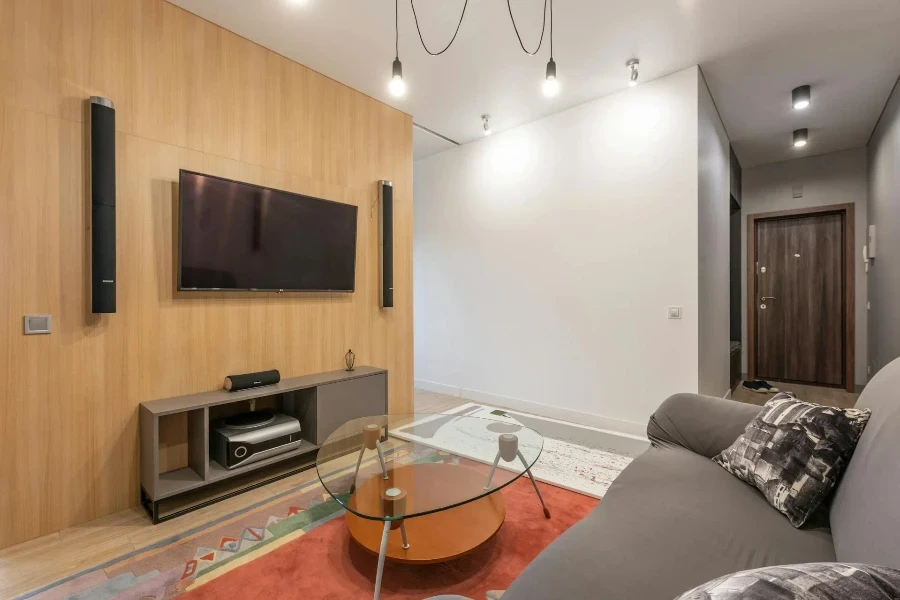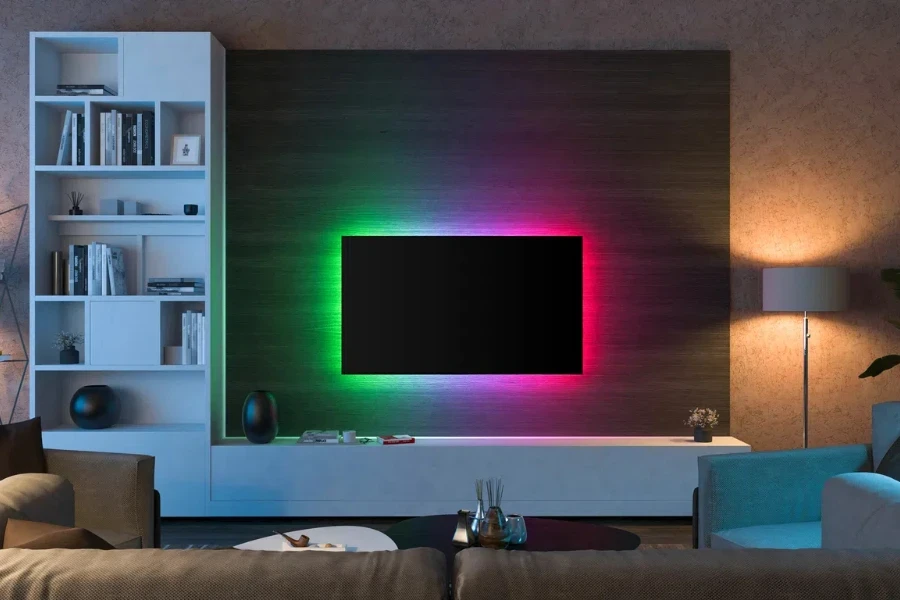Soundbars have become a must-have for any home theater setup thanks to their sleek designs and superb sound quality. Modern TVs are thin and stylish, but their built-in speakers often leave much to be desired.
That’s where soundbars come in— they punch a rich, three-dimensional soundscape that puts you right in the middle of the action, whether you’re watching a movie, playing a game, or listening to music.
Top-of-the-range soundbars use technology like Dolby Atmos to create surround sound that feels real. They use special speakers that bounce sound off your ceiling for an extra layer of depth.
Table of Contents
Key considerations for choosing a soundbar
Top soundbars for your specific needs
Summary
Key considerations for choosing a soundbar

Sound bars come in all sorts of configurations, with different numbers of speakers and subwoofers. Here’s what to have in mind when buying the best soundbar for your needs:
1. Sound quality

First, the number of speakers and channels (think 2.1 or 5.1) matters, as more channels usually mean better separation between left and right speakers, plus surround sound effects. A subwoofer is also a plus if you crave that deep bass rumble.
Next, you want to check the quality of the drivers, especially the tweeters for high notes, as it determines how clear and crisp the sound will get. You’ll also need to find a soundbar with a wide frequency response–we recommend 20Hz to 20kHz.
Soundbars let you adjust the sound with different modes and EQ settings. This is useful when fine-tuning the audio for movies, music, or news broadcasts where clear dialogue is key.
2. Connectivity options
Picking a soundbar that connects to everything you own is nearly as crucial as the sound itself. Here’s why: some HDMI ports have ARC or eARC, which transmit high-quality audio between your TV and soundbar.
Such ports are best for getting the most out of features like Dolby TrueHD. Regular optical and analog inputs, like universal adapters, are also worth having on your checklist, as they let you connect older sound systems to keep using them with your new soundbar.
Bluetooth and Wi-Fi let you stream music straight from your phone or tablet, while USB ports turn your soundbar into a mini music player for your favorite playlists stored on a USB stick. Some soundbars are smart, and an ethernet connection keeps their internet connection stable so you can stream movies and music without hiccups.
3. Audio formats and decoding
While the number of speakers and channels plays a big role, truly immersive sound lies in the audio formats your soundbar can handle. Dolby Atmos and DTS:X are the top-quality formats, creating a three-dimensional soundscape that puts you right in the heart of the action.
Even standard formats like Dolby Digital and DTS are workhorses, ensuring consistent sound quality no matter what you’re watching, from streaming services to Blu-rays.
Audiophiles and gamers will appreciate the support for PCM uncompressed audio—like the difference between a grainy photo and a high-resolution image, it delivers crystal-clear, detailed sound.
4. Power and amplification

The power of your soundbar’s amp might not be the first thing you think about, but it matters! Higher wattage amps are somewhat stronger engines for the sound.
This means they can pump out more volume, which is great for filling a big room or cranking it up for a party. Some amps are more efficient than others, like Class D amps.
5. Size and placement
First, measure the spot under your TV or wall mount to ensure the soundbar isn’t too big or too small. Ideally, it should be close to the same width as your TV for a balanced look.
Size also matters for sound— a bigger soundbar can fill a larger room with better sound, while a smaller one is perfect for a cozy nook. The last thing to consider is placement. Some soundbars bounce sound off the ceiling to create a surround sound effect, so make sure there’s enough space for that to work.
Top soundbars for your specific needs

Soundbars on the market vary in type, perks, and pricing while having different use cases.
Standard soundbars
Standard soundbars are a great way to take your TV’s sound from boring to brilliant without needing a million speakers all over the room. Most are compact and stylish, designed to slide under your TV or hang on the wall.
Standard soundbars typically pack more punch than your TV’s built-in speakers. Multiple drivers create a wider, richer sound. They also typically support technologies like Dolby Digital and DTS.
These fancy audio filters make everything sound crisper and clearer. A standard soundbar will work if you have a small or medium-sized living room and want a simple way to boost your audio experience.
Soundbars with subwoofers
Think of a subwoofer as a dedicated woofer speaker—perfect for handling all the low-frequency stuff that most soundbars can’t. This frees up the main soundbar to focus on the clearer, higher sounds, resulting in a richer, more balanced soundscape.
Subwoofers are a must-have for home theaters, especially for action movies and music, where deep bass really enhances the experience. Many subwoofers are wireless, too, so you don’t have to worry about extra cables cluttering your space.
Plus, these soundbars often support advanced surround sound formats like Dolby Atmos, making you feel like you’re right in the middle of the action with the extra punch of the subwoofer.
Gaming soundbars
Gamers, this one’s for you if flawless audio sync with on-screen action tops your checklist. Forget distracting delays—every footstep and explosion will hit your ears exactly when it happens.
The latest gaming soundbar models even boast special modes that amplify in-game sounds and dialogue. They’re easy to set up, too, with multiple input options that seamlessly connect to your consoles, PCs, and other gaming gear.
And to top it all off, advanced audio processing creates a captivating soundscape. Deep bass explosions, crisp details, and immersive sound—these soundbars will draw you deeper into every game.
Smart soundbars
Smart soundbars blend top-notch audio with features that make your life easier. Imagine voice-commanding your soundbar—thanks to assistants like Alexa or Google Assistant.
Plus, you can stream music straight from your go-to apps or even turn your entire house into a giant speaker zone with multi-room audio. Smart soundbars connect flawlessly to all your latest devices using HDMI and Wi-Fi, so setup isn’t cumbersome.
Summary
The sleek and stylish soundbars take up much less space than clunky speaker setups. But the real magic happens with the sound. More speakers and a subwoofer generally mean richer, more immersive audio. Making connections isn’t tasking with options like HDMI ARC, Bluetooth, and Wi-Fi, which ensure your soundbar works flawlessly with all your devices.
Look for features like Dolby Atmos for a truly three-dimensional sound experience that puts you in the middle of the action. Power and size matter, too. A more powerful soundbar fills larger rooms with clear, detailed sound. The size should also fit your space, ideally matching the width of your TV for a balanced look.
Finally, consider the features you want, as soundbars come in all sorts of configurations, with subwoofers for extra bass, rear speakers for surround sound, special modes for gamers, and even smart features like voice control.




